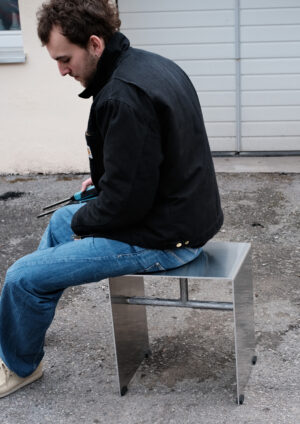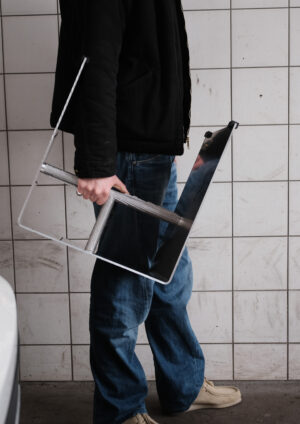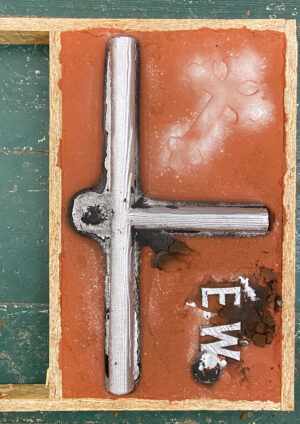


The Casting Stool embodies the connection between industry and craftsmanship by combining material transformation with emotional resonance. The starting material is discarded aluminium car rims that could no longer be used as wheel rims. This act of recycling and reuse underlines the sustainable use of aluminium as a material and a central design element is the T-joint, a traditional wooden joint from the carpentry trade. By transferring it to cast aluminium, I have explored the limits of sand casting – in particular its ability to capture fine details. Inspired by Beton Brut, I explored the possibility of preserving material textures: Just as raw concrete in brutalist architecture retains the imprint of its wooden formwork, the grain of pine wood should also blend into the aluminium. The stool is an exploration of the interplay of craft and industry within a single material. The connecting element reflects the precision of traditional craftsmanship, while the industrially folded aluminium sheet represents the efficiency of mass production. In contrast to mass production, sand casting creates unique pieces. I hope to create a bond with people through their interaction with the stool. I endeavour to trigger emotions with my objects and hope that this will result in longevity, because this is not only due to the material.
Der Casting Stool verkörpert die Verbindung von Industrie und Handwerk, indem er Materialtransformation mit emotionaler Resonanz verknüpft. Ausgangsmaterial sind ausgediente Aluminium Autofelgen, die nicht mehr als Felgen dienen konnten. Dieser Akt des Recyclings und der Wiederverwendung unterstreicht die nachhaltige Verwendung des Materials Aluminium.
Ein zentrales Designelement ist die T-Verbindung, eine traditionelle Holzverbindung aus dem Zimmerhandwerk. Durch ihre Übertragung in den Aluminiumguss habe ich die Grenzen des Sandgusses ausgelotet ‚insbesondere seine Fähigkeit, feine Details zu erfassen. Inspiriert von Beton Brut erforschte ich die Möglichkeit, Materialtexturen zu bewahren: So wie roher Beton in brutalistischer Architektur den Abdruck seiner Holzschalung behält, sollte auch die Maserung von Kiefernholz in das Aluminium übergehen.
Der Hocker ist eine Erkundung des Zusammenspiels von Handwerk und Industrie innerhalb eines einzigen Materials. Das Verbindungselement spiegelt die Präzision traditioneller Handwerkskunst wider, während das industriell abgekantete Aluminiumblech die Effizienz der Serienfertigung repräsentiert. Im Gegensatz zur Massenproduktion schafft der Sandguss Unikate. Ich erhoffe mir durch die Interaktion mit dem Hocker eine Bindung zu den Personen aufzubauen. Ich strebe danach mit meinen Objekten Emotionen auszulösen, erhoffe mir dadurch eine Langlebigkeit, denn diese findet nicht nur wegen des Materials statt.
